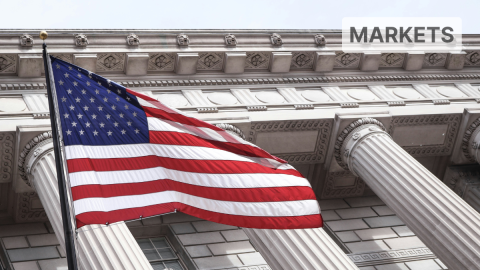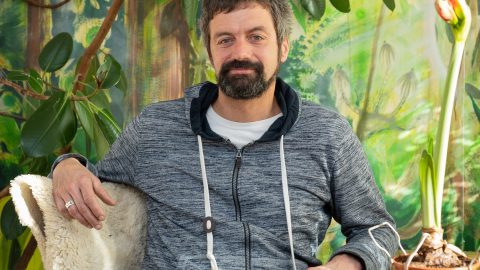Any news articles today on biodiversity will invariably come with the added information that we have witnessed a massive loss of it – i.e. biodiversity – in recent decades. It is also often said that the biodiversity crisis is an even greater threat to humanity than the climate crisis. While the climate crisis decides how we can shape our everyday life on Earth in the future, the biodiversity crisis decides whether this future exists for humans in the first place.
A world full of crises
These are all very powerful and also true claims. However, the multiple crises that have accompanied us for years are also making us more and more numb. Similar to many parts of Ukraine, where despite the daily threat of a missile attack, people try to go about their daily lives as best they can.
The miracle of nature
Therefore, instead of writing about a crisis, I will try to write about the miracle of nature. While we humans try to find methods to get greenhouse gases out of the atmosphere, using a great deal of resources, our nature has had working solutions in real use for millions of years. Trees, for example, which unlike industrial plants work in complete silence, are beautiful to look at and contribute to our well-being. While we are enthusiastically searching for artificial intelligence, we forget about the natural intelligence that surrounds us.
The origins of the biodiversity crisis
While the climate crisis can be traced back to the concentration of greenhouse gases in the atmosphere and thus to our massive volume of CO2 emissions since the Industrial Revolution, the biodiversity crisis is less tangible. Yet its origins could also be dated to around the time of the Industrial Revolution, when people started to switch from permacultures to monocultures. These are more easily scalable and allow the use of ever larger machines with less and less human input. This has resulted in an increasing level of alienation from nature.
Modern portfolio theory vs. billions of years of biodiversity
Harry Markowitz received the Nobel Prize for the insight that a diversified portfolio is less risky than the sum of the individual investments. The simplified metaphor is that you should not put all your eggs in one basket, because if this basket falls down, all the eggs are broken.
The same is true for nature: spruce monocultures are not only harmful to the diversity of forest organisms, but they also increase the risk of loss of value resulting from pests such as bark beetles. In a near-natural forest, these would have no chance to spread. Instead of giving nature more space and strengthening the natural self-defence power of plants, our solution is the use of more and more pesticides.
Harm set, harm get
It seems patently absurd that the biggest opponents of renaturalising agriculture are those political representatives who claim to represent our farmers in the best possible way. Instead of breaking the vicious circle of more pesticides, more resistant pests, and again more pesticides, they warn of crop failures. This is a rather bizarre argument in view of the vast amounts of food that are thrown in the proverbial bin every day because of overproduction. Yet a return to nature would prepare the basis of subsistence for the next generation of farmers. An EU-wide regulation would also ensure that the same standards apply to all and cannot be undercut. The only loser would be the agrochemical industry.
Let’s take the first step
It is in the hands of all of us to fight the biodiversity crisis. A lawn with a thuya hedge is no natural environment, and it therefore requires a lot of maintenance. Birds’ nests may make a little dirt, but they also guarantee that fewer flies and mosquitoes disturb the evening meal in the garden. And by the way, they eat the annoying box tree moth, which would otherwise devour the hedges.
Let’s enjoy nature and let it help us instead of trying to dominate it. Nature heals itself and has already survived the dinosaurs, whose footprints are still visible today in Brijuni, Croatia.
Capital investment can also make a positive contribution: on the one hand directly, as in the case of Erste AM with its long-standing partnership with WWF and joint investments in biodiversity projects. On the other hand, also indirectly, in the investment and dialogue with the companies. Therefore, under the leadership of our biodiversity expert, we have drafted a new policy for Erste AM, which not only does justice to the high value placed on biodiversity but is also publicly viewable in order to entice as many imitators as possible.
More information, insights and expert opinions on the topic of biodiversity can be found in our new ESGenius Letter.
For a glossary of technical terms, please visit this link: Fund Glossary | Erste Asset Management
Legal note:
Prognoses are no reliable indicator for future performance.
Legal disclaimer
This document is an advertisement. Unless indicated otherwise, source: Erste Asset Management GmbH. The language of communication of the sales offices is German and the languages of communication of the Management Company also include English.
The prospectus for UCITS funds (including any amendments) is prepared and published in accordance with the provisions of the InvFG 2011 as amended. Information for Investors pursuant to § 21 AIFMG is prepared for the alternative investment funds (AIF) administered by Erste Asset Management GmbH pursuant to the provisions of the AIFMG in conjunction with the InvFG 2011.
The currently valid versions of the prospectus, the Information for Investors pursuant to § 21 AIFMG, and the key information document can be found on the website www.erste-am.com under “Mandatory publications” and can be obtained free of charge by interested investors at the offices of the Management Company and at the offices of the depositary bank. The exact date of the most recent publication of the prospectus, the languages in which the key information document is available, and any other locations where the documents can be obtained are indicated on the website www.erste-am.com. A summary of the investor rights is available in German and English on the website www.erste-am.com/investor-rights and can also be obtained from the Management Company.
The Management Company can decide to suspend the provisions it has taken for the sale of unit certificates in other countries in accordance with the regulatory requirements.
Note: You are about to purchase a product that may be difficult to understand. We recommend that you read the indicated fund documents before making an investment decision. In addition to the locations listed above, you can obtain these documents free of charge at the offices of the referring Sparkassen bank and the offices of Erste Bank der oesterreichischen Sparkassen AG. You can also access these documents electronically at www.erste-am.com.
N.B.: The performance scenarios listed in the key information document are based on a calculation method that is specified in an EU regulation. The future market development cannot be accurately predicted. The depicted performance scenarios merely present potential earnings, but are based on the earnings in the recent past. The actual earnings may be lower than indicated. Our analyses and conclusions are general in nature and do not take into account the individual characteristics of our investors in terms of earnings, taxation, experience and knowledge, investment objective, financial position, capacity for loss, and risk tolerance.
Please note: Past performance is not a reliable indicator of the future performance of a fund. Investments in securities entail risks in addition to the opportunities presented here. The value of units and their earnings can rise and fall. Changes in exchange rates can also have a positive or negative effect on the value of an investment. For this reason, you may receive less than your originally invested amount when you redeem your units. Persons who are interested in purchasing units in investment funds are advised to read the current fund prospectus(es) and the Information for Investors pursuant to § 21 AIFMG, especially the risk notices they contain, before making an investment decision. If the fund currency is different than the investor’s home currency, changes in the relevant exchange rate can positively or negatively influence the value of the investment and the amount of the costs associated with the fund in the home currency.
We are not permitted to directly or indirectly offer, sell, transfer, or deliver this financial product to natural or legal persons whose place of residence or domicile is located in a country where this is legally prohibited. In this case, we may not provide any product information, either.
Please consult the corresponding information in the fund prospectus and the Information for Investors pursuant to § 21 AIFMG for restrictions on the sale of the fund to American or Russian citizens.
It is expressly noted that this communication does not provide any investment recommendations, but only expresses our current market assessment. Thus, this communication is not a substitute for investment advice, does not take into account the legal regulations aimed at promoting the independence of financial analyses, and is not subject to a prohibition on trading following the distribution of financial analyses.
This document does not represent a sales activity of the Management Company and therefore may not be construed as an offer for the purchase or sale of financial or investment instruments.
Erste Asset Management GmbH is affiliated with the referring Sparkassen banks and Erste Bank.
Please also read the “Information about us and our securities services” published by your bank.
Subject to misprints and errors.



